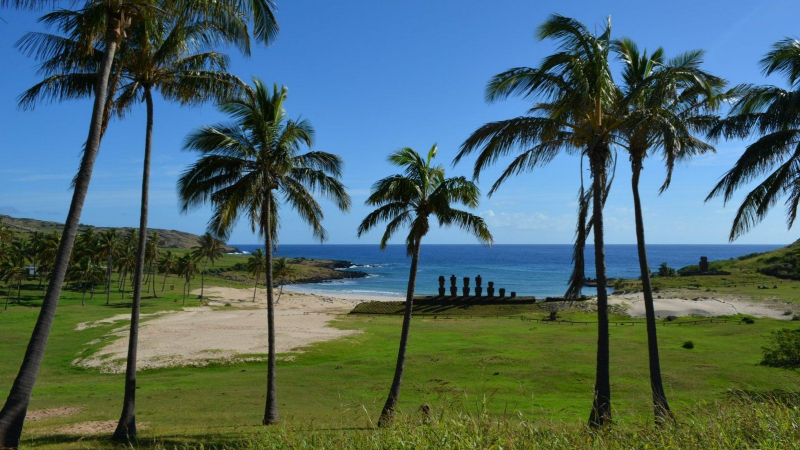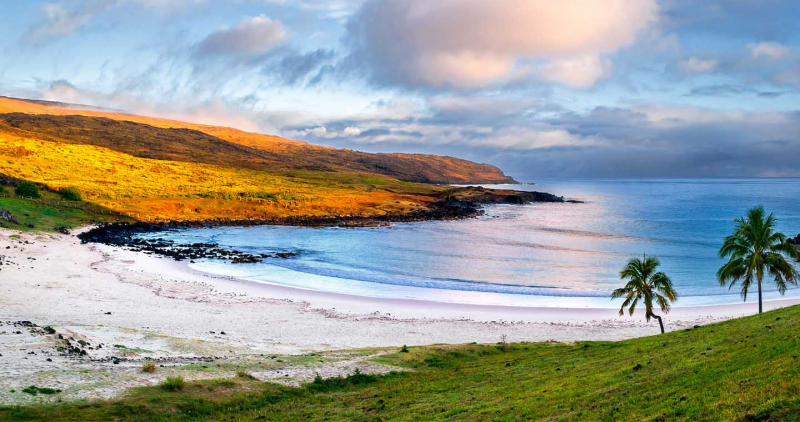Anakena Beach

It's not every day that you can combine a day at the beach with a visit to some of the world's most iconic archaeological sites, but that's exactly what you get at Anakena beach on Easter Island.
Anakena is home to a group of moai, which are the massive carved stone figureheads that are synonymous with Easter Island. Anakena's Ahu Nao-Nao stones are a collection of seven such statues located right on the beach. I'd say they're overlooking, but they actually face inland. It is unusual for any of these moai to be positioned facing the sea.
Anakena is also historically significant because it is thought to be where Hotu Matua, the first settler of the islands, disembarked. This king is said to have lived in one of the many caves along the beach. Anakena's beach is made of white coral sand and is one of only two sandy beaches on Easter Island. This pacific beach is palm-fringed and almost as deep as it is wide.
The coconut palm trees at Anakena were actually reintroduced from Tahiti, as nearly all of the trees on the island were felled in order to make and transport the Moai. The story of Easter Island and how the islanders nearly wiped themselves out is one of history's greatest ironies, and it serves as the basis for the film 1994 Rapa Nui. Anakena has plenty of facilities, including a car park, changing rooms, toilets, and a picnic area among the palm trees - just keep an ear out for the sound of falling coconuts!
















